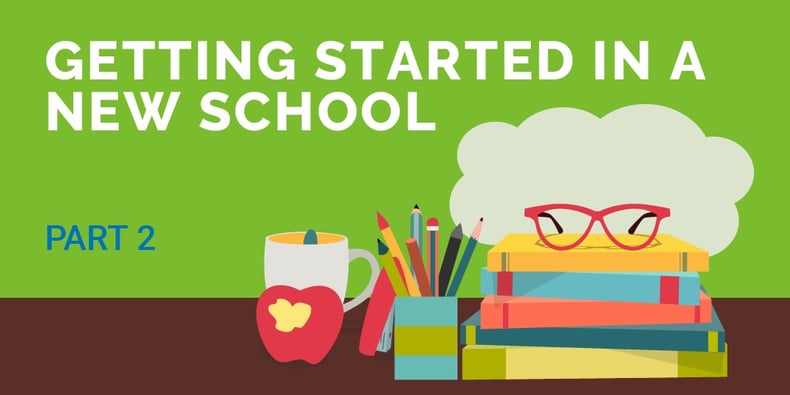
The interviewing is over, the offer has been made, and the contract is signed. Everything is wrapped up in the former place of employment (or at the university), and you are ready to dive in and get started at your new position.
So…Where to Start?
As daunting as moving out of a classroom can be, it is even harder to move into one. There are always questions to be answered and challenges in getting everything organized and ready. Here are a few tips that I have learned over the years as I changed from one job to another:
- Contact the principal about getting moved in: This is probably a no-brainer, but there are things that come up that make this challenging at times. Schools release students at different times, so this year, we were waxing our tile floors while other schools were still in session. This made room access a challenge, and then getting keys a challenge. Communicate early to help make it a smooth transition.
- Get your email set up: Sometimes, this can start before the end of the school year. It is much easier to keep up on communication when you are “in the system,” so to speak. This can be a tad overwhelming, as if you are doing two jobs at once, so it may be wise to hold off until you are ready to start in full force.
- Get technology and transfer files: Along the same lines, try to get any technology as soon as possible. Every district will handle this differently, but it is good to ask to see if you can get it early. This can make transferring files easier and can give you a head start on learning the operating system if it is a Mac-to-PC change or PC-to-Mac change. If you’ll be using new tech, be sure to check the training resources offered and brush up on your skills.
- Connect with the teachers: If you were unable to meet the teachers through the interview process, try to reach out to them to introduce yourself. As principal, I often do these introductions, but it is OK to be assertive and initiate it yourself.
- Try to get your hands on the curriculum ASAP: Usually, this is possible. Most likely, you will be teaching something new in some context, so finding the alignment documents, the teachers’ manuals, and the standards for the new position is very important. This is good to ask of a principal—it shows a desire to focus on the standards and stay true to the district-approved curriculum. The other teachers in the grade level or department will be a good resource for this, too. And if you need new lessons or activities on a new topic or grade level you are teaching, be sure to check out educator lesson and community sites, such as MimioConnect.
- Find the right people and learn their names: The custodian is a critical person to know as you start in a new classroom. There may be desks to be moved, tables to be rearranged, or painting to be done. Ask questions about everything—even if it seems simple. Is there a school alarm system, how to turn on the lights, how to control the air conditioning, what to use to hang things on the walls, etc. The other key players to get to know are the secretaries—they usually know more than the principal about the actual workings of the building (true story). They can help you with getting copies made, how to get basic supplies if you need them, and where important forms are located.
- Get some new school garb: This shows commitment to the school. It may not be possible until after the school year starts to get something with the school logo on it, but at a minimum you can get some clothes that match school colors for the first few weeks of the year.
- Meet some of the students if possible: By being around the school building, it could be possible to meet a student or two. I wouldn’t go out of my way for this, but if there are summer classes going on, it is good to stick your head in and meet a few of the students. Maybe by going to the community library or pool you could also meet a few. Learning is all about connections, and making early positive connections is always a good thing.
- Purge the old: There is probably a great deal of “stuff” that has been left for you, and it can be hard to know what to do with it all. One strategy that I have used is a shelf for things I’m not sure what to do with. My rule is “if I don’t use it during this school year, I am going to get rid of it.” Make sure that you check with the principal about disposing of classroom items—there are sometimes district or board policies about these things.
- Take some time: Taking a break is really important, even though it may feel like it isn’t possible. To run from August of one year to May of not the next year, but the following year, is a recipe for burnout. I have found it is best to get away and leave the area to really feel like it is a break. And don’t take your teacher’s manuals or your laptop with you, either!
With these tips, it will be easier to start the year off right and have a great experience with your colleagues and students. And if you missed our previous post about what to do when switching to a new teaching job, be sure to check it out here!


